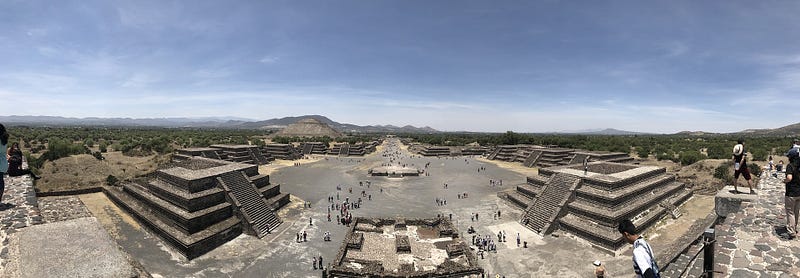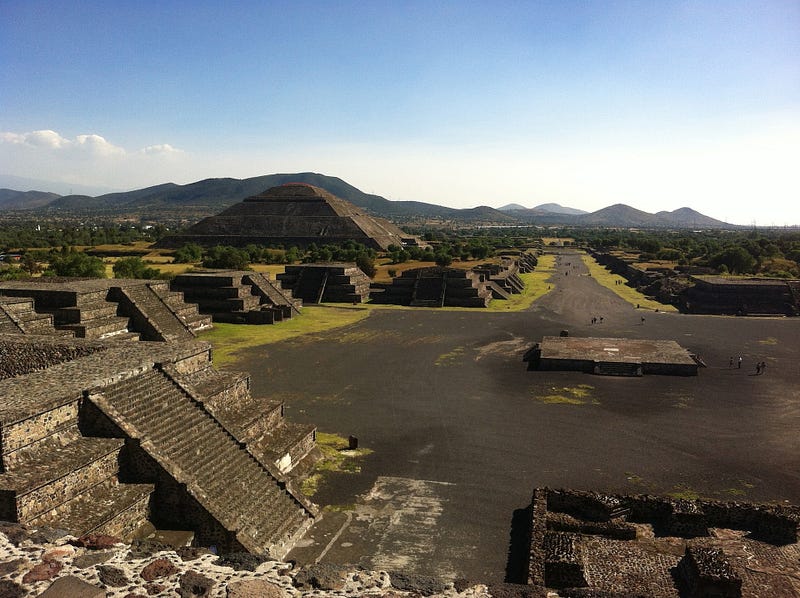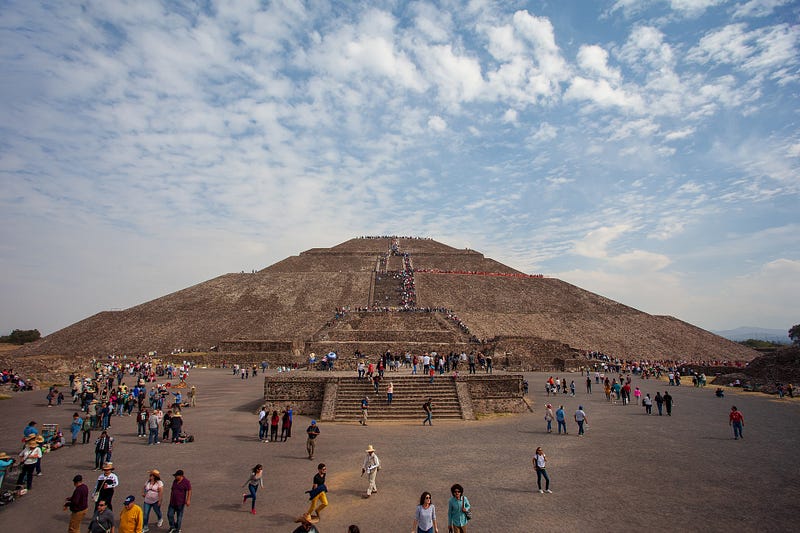Exploring the Mysteries of Teotihuacán: A Historical Overview
Written on
Chapter 1: The Enigma of Teotihuacán
The ancients referred to Teotihuacán as the realm where individuals transformed into gods. However, the true architects of this magnificent city remain a mystery. Teotihuacán stands out as one of the most impressive and expansive pre-Columbian urban centers. Join us as we uncover some astonishing facts revealed by this archaeological site nestled in southeastern Mexico.

[Photo: Pau Mondragón from Pixabay]
As one of the largest religious hubs in Mesoamerica, Teotihuacán had a significant impact on various pre-Columbian cultures, despite its relatively short existence. According to indigenous beliefs, it was here that light emerged from darkness, marking the creation of the world. The city's sacred status endured well beyond its decline, with pilgrimages continuing until the Spanish Conquest. Even before its downfall, Teotihuacán influenced many regions in Mesoamerica, inspiring architectural styles and artistic motifs that were adopted by subsequent civilizations. Its influence extended beyond modern-day Mexico, reaching into Guatemala and Honduras.
Section 1.1: Geographical Location of Teotihuacán
The archaeological site of Teotihuacán is situated in the northeastern Mexican Basin, at an elevation of 2,300 meters above sea level, approximately 40 kilometers from Mexico City.
Subsection 1.1.1: The Meaning of Teotihuacán
The original name of the city remains elusive; the name "Teotihuacán" was bestowed by the Aztecs after its decline. Scholars have historically interpreted it as "the place where gods are born" or "the place where one becomes a god." However, contemporary researchers propose that it more accurately translates to "city of the sun."

[Photo: TheBrandsmen from Pixabay]
Section 1.2: The History of Teotihuacán
According to ancient myths, the city was built by quinametin, colossal beings whose civilization perished in a catastrophic event before humans appeared. Archaeological findings suggest that construction began around 100 BC, with the urban plan developing significantly between 200-250 AD, characterized by two main avenues—one extending north to south and the other east to west. The Avenue of the Dead, a primary thoroughfare over four kilometers long, was lined with temples and palaces and served as the site for grand religious processions attended by thousands.
The city was not only a ceremonial center but also housed residential districts, with approximately 20 neighborhoods organized around a rectangular grid. The elite, including rulers, priests, and military leaders, resided in the core of Teotihuacán, while artisans lived in specialized neighborhoods with small temples dedicated to their patron deities.
The peak of Teotihuacán's development occurred from the 4th to the 7th centuries, when the city flourished as a cosmopolitan metropolis with over 200,000 inhabitants representing diverse tribes from across Mesoamerica.
Chapter 2: The Decline of Teotihuacán
The decline of Teotihuacán began in the late 6th century, previously thought to have fallen around 650 AD. Recent research indicates that the central area suffered a devastating fire attributed to arson rather than an accident, resulting in the destruction of palace sculptures. Over the next three centuries, the city gradually became deserted.

[Photo: jjnanni from Pixabay]
Mysteries of Teotihuacán
Teotihuacán remains one of the most enigmatic ancient Mesoamerican cities. The identity of its founders is still uncertain, and although the Aztecs named it, the original builders belonged to a much older civilization. The reasons for its decline are equally obscure. Some experts speculate that invading tribes from the north might have caused the destruction, while others suggest environmental factors such as drought. However, many researchers now believe that internal strife and economic rivalry among the elite may have led to its downfall.
The structure of governance in Teotihuacán also poses questions, as no royal tombs or monuments have been discovered to indicate a single ruler. It is theorized that power may have been shared among multiple leaders or vested in priestly authorities.
Returning to its name, the original title of this significant religious center remains unknown, even 500 years after its fall when the Aztecs named it Teotihuacán.

[Photo: Chepe Nicoli from Pixabay]
Archaeological Wonders of Teotihuacán
Among the most significant archaeological finds at Teotihuacán is the Pyramid of the Moon, believed to be the oldest structure in the city, constructed around 100 BC and expanded multiple times by 450 AD. Each construction phase concluded with sacrificial rituals and valuable offerings, including jade and obsidian artifacts. The pyramid was built over a natural cave, accessed via a tunnel symbolizing the underworld.
The Avenue of the Dead begins at the Plaza of the Moon and leads to the Citadel, a vast square featuring the Temple of Quetzalcoatl, which was also the site of grand sacrifices. The Pyramid of the Sun, one of the largest in Mesoamerica, rises impressively at 65 meters high.
These structures are just a few of the many treasures awaiting exploration in Teotihuacán. Archaeologists have also uncovered residential areas, markets, and granaries, alongside numerous religiously-themed wall paintings that depict rituals but notably omit any images of rulers.
The first video titled "Teotihuacan: Where One Becomes a God" delves into the city's historical significance and its impact on Mesoamerican culture.
The second video, "Teotihuacan, City of the Gods," explores the archaeological findings and mysteries that continue to intrigue researchers today.
Thank you for journeying through the fascinating history of Teotihuacán. If you enjoyed this exploration, please consider showing your support with applause, following my work, or leaving a tip. Your encouragement is appreciated!